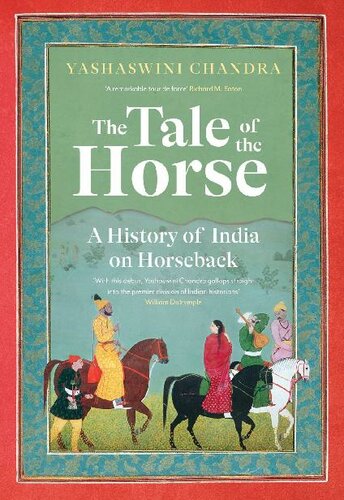

Most ebook files are in PDF format, so you can easily read them using various software such as Foxit Reader or directly on the Google Chrome browser.
Some ebook files are released by publishers in other formats such as .awz, .mobi, .epub, .fb2, etc. You may need to install specific software to read these formats on mobile/PC, such as Calibre.
Please read the tutorial at this link: https://ebookbell.com/faq
We offer FREE conversion to the popular formats you request; however, this may take some time. Therefore, right after payment, please email us, and we will try to provide the service as quickly as possible.
For some exceptional file formats or broken links (if any), please refrain from opening any disputes. Instead, email us first, and we will try to assist within a maximum of 6 hours.
EbookBell Team

4.8
84 reviews In this
inspired and singularly erudite debut, Yashaswini Chandra takes us on
the trail of the horse into and within India. What follows is a
surprising and exhilarating journey, covering caravan-trade routes
originating in Central Asia and Tibet, sea routes from the Middle East,
and the dominions of different sultans and Mughal emperors, the south
Indian kingdoms as well as the Rajput horse-warrior states. She outlines
the political symbolism of the horse, its vital function in social
life, religion, sport and war, its role in shaping economies and forging
crucial human bonds. We learn of the emergence of local breeds such as
the Kathiawari and the Marwari, the Zanskari and the Manipuri. We
encounter fabulous horsewomen too, Chand Bibi, Maratha princesses and
women polo players among them. We meet grooms, farriers, breeders,
traders and bandits. The highlight of course are the magnificent
examples of the horse itself – Rana Pratap’s legendary Chetak, Ranjit
Singh’s much-contested Laili, Pabuji’s cherished black mare and those
horses captured in paintings and equestrian portraits. This glorious age
of the horse would meet its agonized decline with the onset of colonial
rule and mechanization.
In the end, what is most remarkable is
that the history of the horse in India, mirroring that of its human
inhabitants, is a tale of migration and permanent intermingling. The
horse is thus an exceptional and fitting vantage from which to
appreciate the history of the land, influenced as it was by this most
instrumental of animals.